When deciding between an electric vs manual standing desk, several factors come into play to ensure you choose the option that best suits your needs.
For office workers, the physical damage caused by sitting for long periods is invisible and long-lasting. Basically, all organs cannot escape its “torture.” Obesity, lumbar spine, cervical spine, hemorrhoids, cardiovascular disease, and a series of injuries are all related to sedentary. In a sense, sitting for long periods harms human health as seriously as smoking, and it is imminent to improve the hazards of sedentary. For this reason, manual crank standing desks, and electric sit stand desks have emerged. But who is more practical and more suitable for home or office use?

Here’s a breakdown to help you make an informed decision:
1. Budget:
- Electric standing desks typically come with a higher price tag due to their motorized mechanisms. If budget is a concern, a manual standing desk might be a more economical choice.
2. Convenience and Ease of Adjustment:
- Electric standing desks offer effortless adjustment with the push of a button, allowing you to transition between sitting and standing positions quickly. If convenience is a priority and you prefer seamless adjustment, an electric desk is the way to go.
- Manual standing desks require manual adjustment, usually through a crank or lever system. While not as quick or effortless as electric desks, manual desks still provide flexibility in height adjustment.
3. Height Range:
- Electric standing desks often offer a broader height range, accommodating users of varying heights and preferences. This can be particularly beneficial if you’re taller or shorter than average or if multiple people will be using the desk.
- Manual standing desks may have a more limited height range compared to electric desks, so ensure the desk can be adjusted to your desired height comfortably.
4. Stability and Weight Capacity:
- Electric standing desks tend to be more stable, especially at higher settings, due to their motorized mechanisms. They also typically have higher weight capacities, allowing you to place heavier equipment on the desk without compromising stability.
- Manual standing desks can vary in stability depending on their design and construction. Consider the desk’s stability and weight capacity, especially if you plan to use multiple monitors or heavy equipment.
5. Power Source and Accessibility:
- Electric standing desks require access to a power source to operate. Ensure that your workspace has easy access to power outlets or consider options with battery backup in case of power outages.
- Manual standing desks do not require electricity, offering greater flexibility in placement within your workspace.
6. Noise Level:
- Electric standing desks may produce some noise during height adjustment due to the motorized components. Consider the noise level if you work in a quiet environment or share a workspace with others.
- Manual standing desks are typically quieter since they do not rely on motorized mechanisms.
7. Maintenance and Durability:
- Electric standing desks may require occasional maintenance of the motorized components to ensure smooth operation. Consider the long-term maintenance requirements and warranty coverage.
- Manual standing desks generally have fewer moving parts and may require less maintenance over time.
8. Personal Preference:
- Ultimately, your choice between an electric and a manual standing desk may come down to personal preference and specific workspace requirements. Consider your workflow, ergonomic needs, and daily habits to determine which type of desk aligns best with your lifestyle.
By evaluating these factors, you can choose the standing desk option that optimizes comfort, productivity, and overall well-being in your workspace.